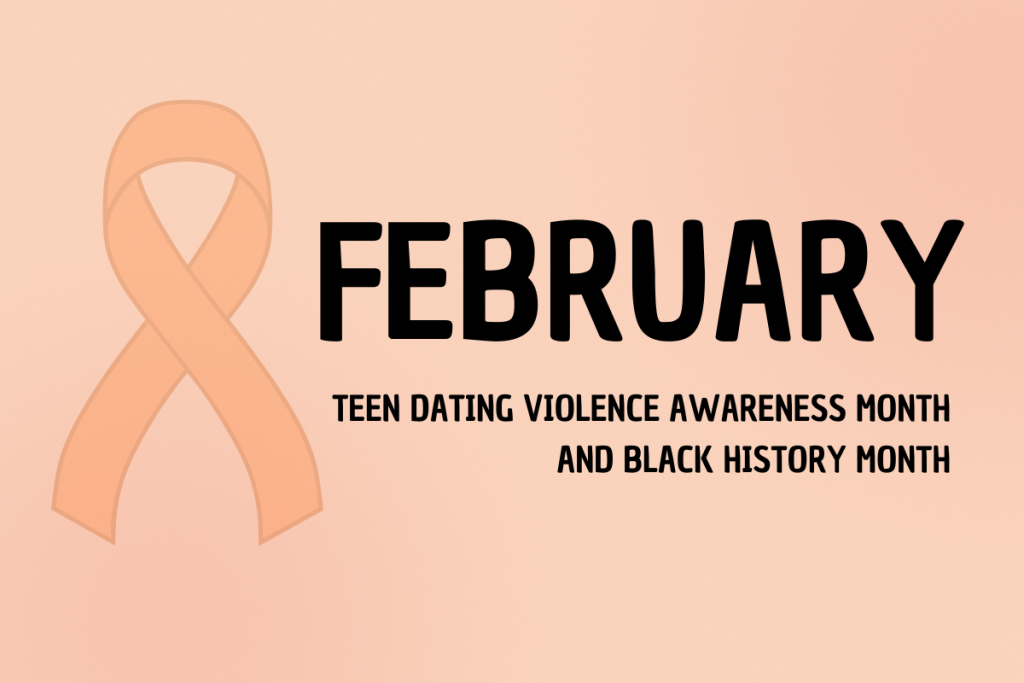While we all hope that the teens in our lives and in our communities experience safe and enjoyable dates, teen dating violence is a widespread issue affecting millions of young people every year. The impact of experiencing teen dating violence has a long-lasting and profound impact on teens that last into adulthood. According to the CDC:
- 1 in 3 teens in the U.S. will experience physical, emotional, or sexual abuse from a dating partner before turning 18.
- According to the 2023 Findings from Future Without Violence, 1 in 5 girls and 1 in 10 boys experience dating violence.
- Nearly 8%of high school students report being physically hurt by someone they were dating.
What is Abuse?
There are many kinds of abuse. One of the main objectives of TDVAM is to help all of us, teens parents, educators, religious professionals, and employers understand the forms that abuse can take. Examples include:
Physical Abuse: Hitting, shoving, grabbing, or any form of physical harm.
Emotional Abuse: Name-calling, belittling, constant criticism, isolation from friends and family.
Sexual Abuse: Any unwanted sexual contact, including pressuring someone for sex or touching them without consent.
Digital Abuse: Using technology to bully, harass, stalk, or control a partner through social media, texting, or other online platforms.
Long-Term Effects of Teen Dating Violence
There are a wide-range of long-term effects of teen dating violence including but not limited to:
- Developing depression, anxiety, or PTSD symptoms
- Higher rates of poor academic performance and dropping out of high school or during early college years
- Increased reporting of eating disorders, substance use, and other unhealthy coping skills
- Increased risk for suicidal ideation and behaviors
- Challenges in forming healthy, trusting relationships in the future
- A higher risk of victimization in future relationships
For Black teens, according to national statistics, 43% report experiencing dating violence across the United States – exceeding the national average of victimization. Black communities face challenges that are often magnified due to systemic inequities and barriers to support, including:
Higher Rates of Criminalization: Black survivors are less likely to be viewed as victims and more likely to be punished instead of protected.
Cultural Stigmas: Black girls face adultification bias, meaning they are perceived as “more mature,” often viewed in society as being “more provocative” and in less need of protections. This negatively impacts how they receive support.
Disproportionate Exposure to Violence: Structural inequalities lead to increased exposure to violence at home, in communities, and in schools.
Understanding Why Intersectionality Matters
Understanding the intersection of race and interpersonal violence is key to breaking cycles of harm and building pathways to healing. It is necessary to recognize that Black survivors often face additional layers of discrimination, creating barriers to finding safety, healing, and justice.
At The Cocoon, we recognize that it is essential for services to be culturally responsive and crafted to meet the unique experiences and needs of all survivors. We continuously aim to ensure our services are accessible to all by breaking down barriers to access, not only our services, but also local resources in a more holistic way. And we strive for excellence in our survivor-centered approach by prioritizing safety, autonomy, and the healing of survivors.
The Importance of TDVAM
The issues with teen abuse and violence are certainly not contained to a single month. However, the February focus has three primary reasons.
Prevalence: Issues with teen dating are alarmingly common.
Impact: No one should experience abuse or violence, regardless of age. The impact of teen dating violence can have long-lasting and profound impacts on teens including a higher risk of developing depression, anxiety, PTSD, poor academic performance and increased drop out rates, increased substance abuse, eating disorders, and self-harm as well as increased suicidal ideation.
Prevention: Awareness leads to education. Helping our teens understand what abuse is AND what a healthy relationship entails is fundamental to preventing teen dating abuse and violence
How do I Help?
There are many ways to help. Here are some examples:
Start Conversations: Talk to teens in your life about healthy relationships and consent
Wear Orange: Orange is the color of TDVAM and on February 11th we encourage you to join the national movement for “Wear Orange Day” to show that you stand with teens
Share Information: Use social media to spread awareness and resources using the hashtag #TeenDVAM
Go Local: Support local organizations that work with survivors of violence and abuse, helping keep them open and ready when they are needed by our teens.
Teen Dating Violence Resources
Use the resources below to learn more about Teen Dating Violence and to get assistance.
Black History Month and Anti-Violence Advocacy
Black History Month is an annually observed month-long celebration of African American life, history, and culture. Black History Month was created to focus attention on the contributions of African Americans to the United States. It honors all Black people from all periods of U.S. history, from the enslaved people first brought over from Africa in the early 17th century to African Americans living in the United States today.
The 2025 Black History Month theme, African Americans and Labor, focuses on the various and profound ways that work and working of all kinds – free and unfree, skilled, and unskilled, vocational and voluntary – intersect with the collective experiences of Black people.
At The Cocoon, February is a time to celebrate Black resilience, excellence, and contributions to our society. It is also a time to reflect on the unique challenges Black individuals face, particularly in the fight against domestic and sexual violence. To champion safety, healing, and justice for all survivors, it is our responsibility to acknowledge the intersection of oppression and abuse and continue to foster conversations about the role racial discrimination has played in cycles of violence against people of color.


